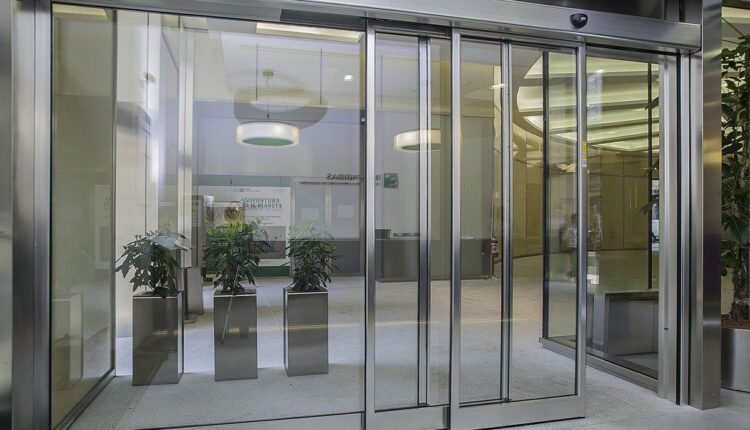Telescopic doors are one of the types of automatic sliding entrance structures widely used today. The automatic telescopic sliding door is among the most compact door designs. They are installed in case of the technical impossibility of mounting standard sliding doors. In some cases, the need for their installation is dictated by the design features of the room. Installing a door structure of this type allows you to increase the width of the doorway by a third. When it is opened, 2 doors, located on each side of the doorway, move apart.
The main feature and main advantage of such doors over standard sliding structures is their high throughput, achieved by expanding the doorway. If an ordinary door opens no more than half of the opening (the rest of the space is occupied by doors moving to the sides), then the telescopic structure in the extended state frees up to two-thirds of the opening.
Where are they used for
Automatic telescopic doors are most suitable for buildings that require the widest possible passage at the entrance: hotels, business centers, shopping malls, etc. Most often, such structures are installed in public buildings characterized by high traffic of people. These doors got their name due to the design features: when opened, they move apart according to the principle of a telescope.
The work modes
- Always open or closed;
- Automatic operation;
- Doors open only for exit;
- Winter mode (sashes do not open fully).
In addition to selecting the operating mode, for telescopic entrance doors, you can adjust the speed of the door leaves, the delay time of the leaves in the open state, the radar coverage area, etc.
What are they made of
Telescopic automatic doors are sliding translucent structures constructed from a special profile and glass filling.
In their production, the following types of glass can be used:
- Reinforced. The presence of a rigid wire frame inside the reinforced glass ensures its high strength.
- Tempered. This is glass that has undergone special heat treatment at extremely high temperatures. It adequately withstands blows of great force. If such glass breaks, it breaks into non-sharp fragments with safe edges.
- Triplex. Such glass is made by gluing together several glass plates. The use of a special film in the production of triplex does not allow it to scatter into separate fragments when damaged.
- Optiwhite. This is a glass with a minimum content of impurities. Ideally transmits light, is colorless, does not change colors, and does not distort objects.
Advantages of the automatic telescopic sliding doors
- High throughput;
- Variety of designs and decoration techniques;
- Ease of use;
- Protection of the premises from dust, noise, and street odors.
The cost of telescopic doors depends on the size of the structure, the type of profile and glass used, the number of leaves, the complexity of installation, the quality of fittings, etc. If it is required to maximize the width of the passage and the speed of opening, a telescopic drive is used, which is based on a standard sliding drive.
An additional belt drive is used to transmit torque to the telescopic leaves. This automatic drive model allows you to increase the width of the passage by one and a half times compared to the standard sliding drive and bring it up to 2/3 of the opening width. Often these doors are installed in narrow existing openings and corridors where a maximum opening width is required in a limited space.
The use of telescopic automatic doors is becoming more extensive and popular every year, a huge number of shops, shopping centers, and hotels are already equipped with them.



Comments are closed.